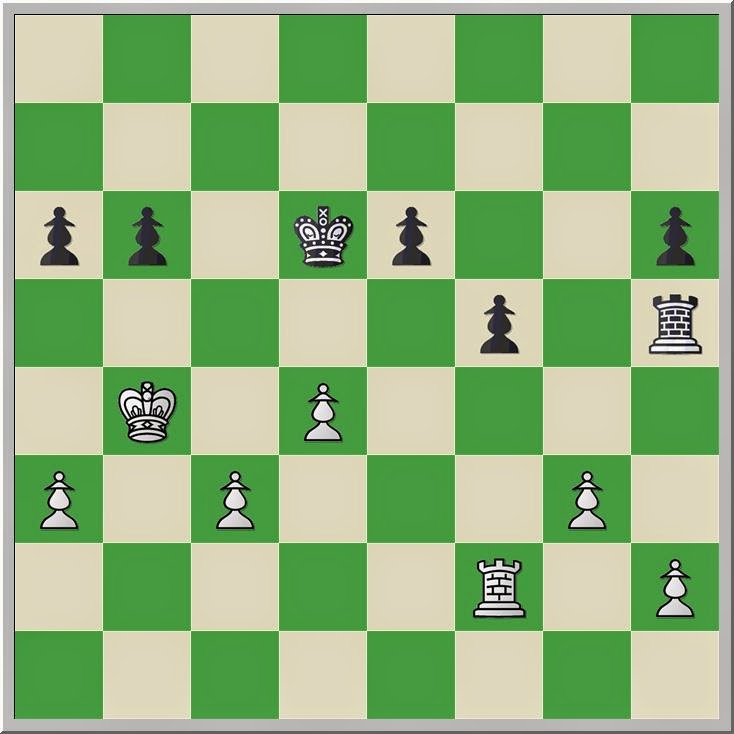My primary chess club had been divided into groups meeting on different days by age in years past. This year the division was changed to one based on skill. Consequently, my beginning* group on Tuesdays receives different instruction than the advanced group on Thursdays. Members of my in-school chess class and those who have contracted with me for individual lessons will get one or another of these lessons when appropriate.
The beginning group this week is working on recognizing checkmate. Interested parents may contact me to recieve a copy of the Checkmate in One exercise they will be working through over the next several weeks. I created a set of 48 positions from actual play. In every position, there is a possible checkmate on the move. My beginning group worked through the first six this week.
The advanced group is working through developing plans and correctly evaluating a series of positions that arose, or could have arisen, in one of my online games. My game ended in a textbook draw that my opponent insisted upon playing out. Along the way, we both missed clear winning chances during the course of a rook ending.
The first position occured near the end of the game. White recognizes that the position has reached the textbook Philidor Position that he had been aiming at for the past few moves.
White to move
White draws by occupying the third rank with his rook. The game continued 67.Ra3+ Kd4 68.Ke1 e3. Now that Black has advanced the pawn, White resorts to checks from the rear. Black cannot escape these checks and also maintain the pawn.
69.Ra8 Ke4 70.Re8+ and the game went on another twelve moves with White continuously checking the Black king.
The second instructive position comes from the moment when Black missed a win.
Black to move
After 54.Ra4+, Black played 54...Kd5. 54...Kd3! on the other hand would have facilitated the advance of the e-pawn and victory.
In the third instructive position for this week, White missed a chance for a clear advantage.
White to move
Black has just played 42...f5? White played 43.c4 and later let the game slip further away. However, he might have played 43.h4!
After 43.h4, Black's best chance requires the sacrifice of a pawn. 43...f4 44.Rxf4 Rb5+ 45.Kc4 and White has a clear advantage, albeit not necessarily a winning advantage.
There are many interesting positions that arise after 43.h4! Kd7?
One that is part of my lesson plan arises after the continuation 44.Rf4 Kc6 45.a4 Kd6 46.c4 Kc6 47.a5! b5
White to move
White's best move appears to be 48.d5! A possible line is 48...exd5 49.cxb5+ axb5 50.a6!
Either the a-pawn will promote, or all of both sides' pawns on the a- through e-files will be liquidated and the White king will march over to nab the trapped rook.
*Beginning and advanced are fuzzy terms in the chess world. From the perspective of a super-Grandmaster, everyone under 2000 Elo is a beginner. That definition includes me. For purposes of my after school chess club for elementary age children, advanced players are those who have qualified for the Washington State Elementary Chess Championship. Qualification each year requires scoring 3/5 or better in a qualifying tournament.


















No comments:
Post a Comment